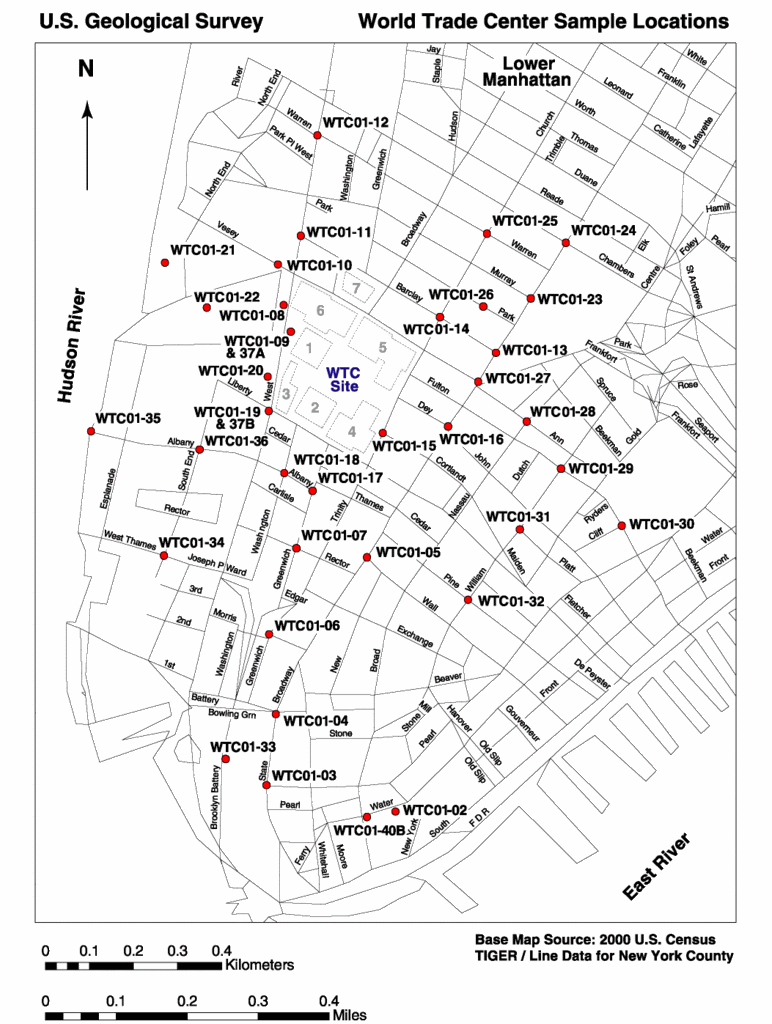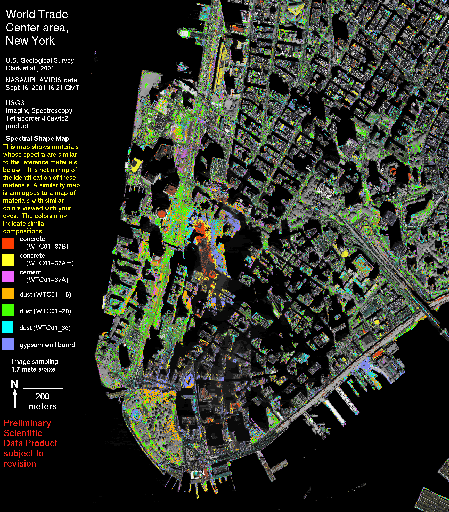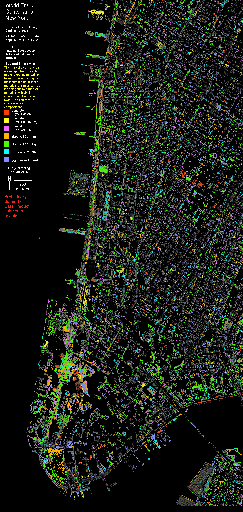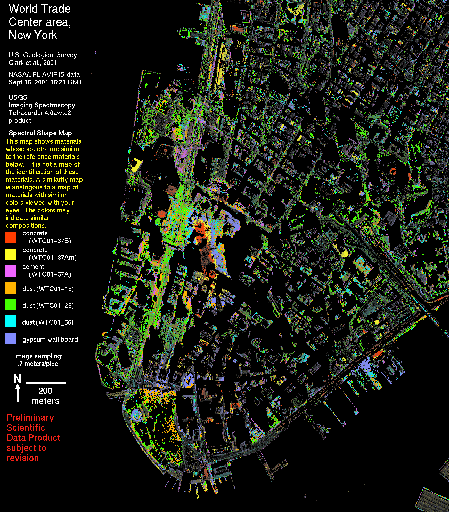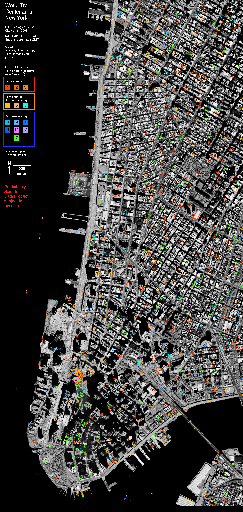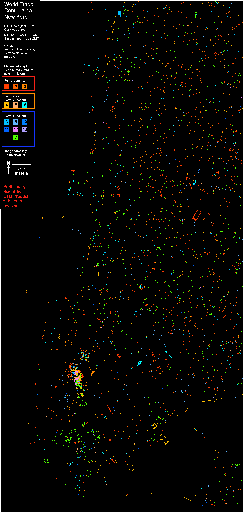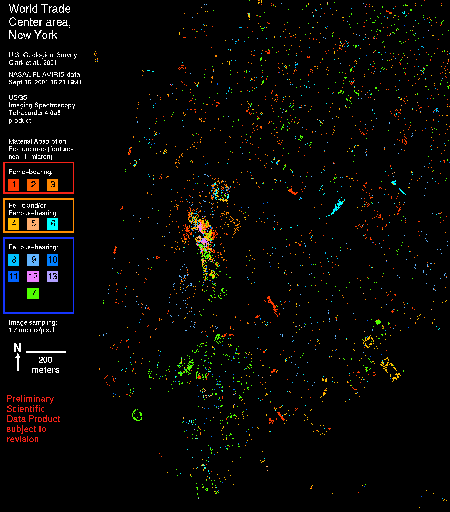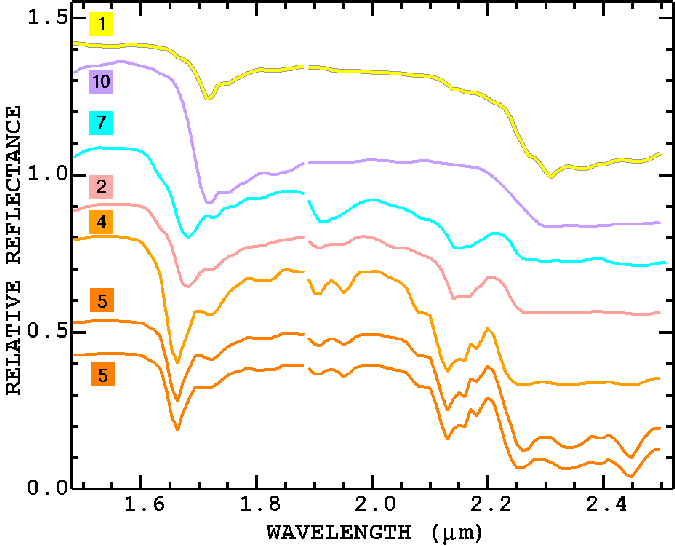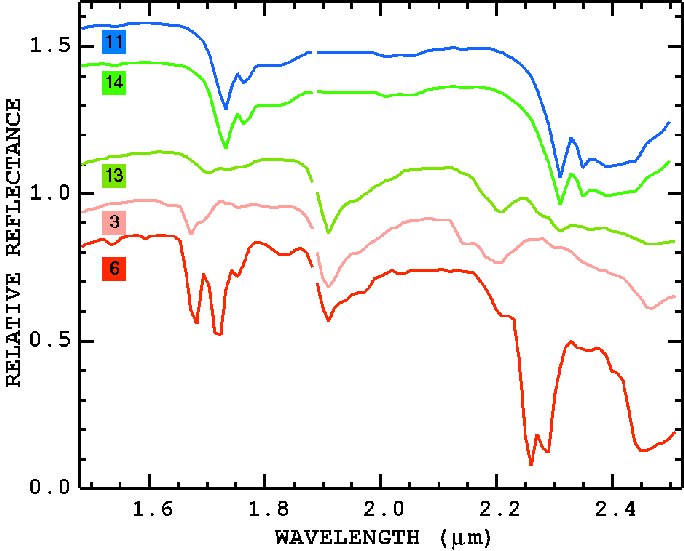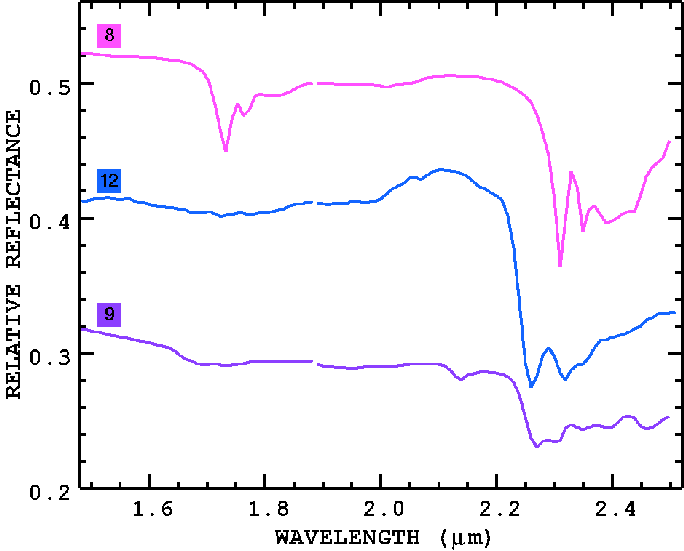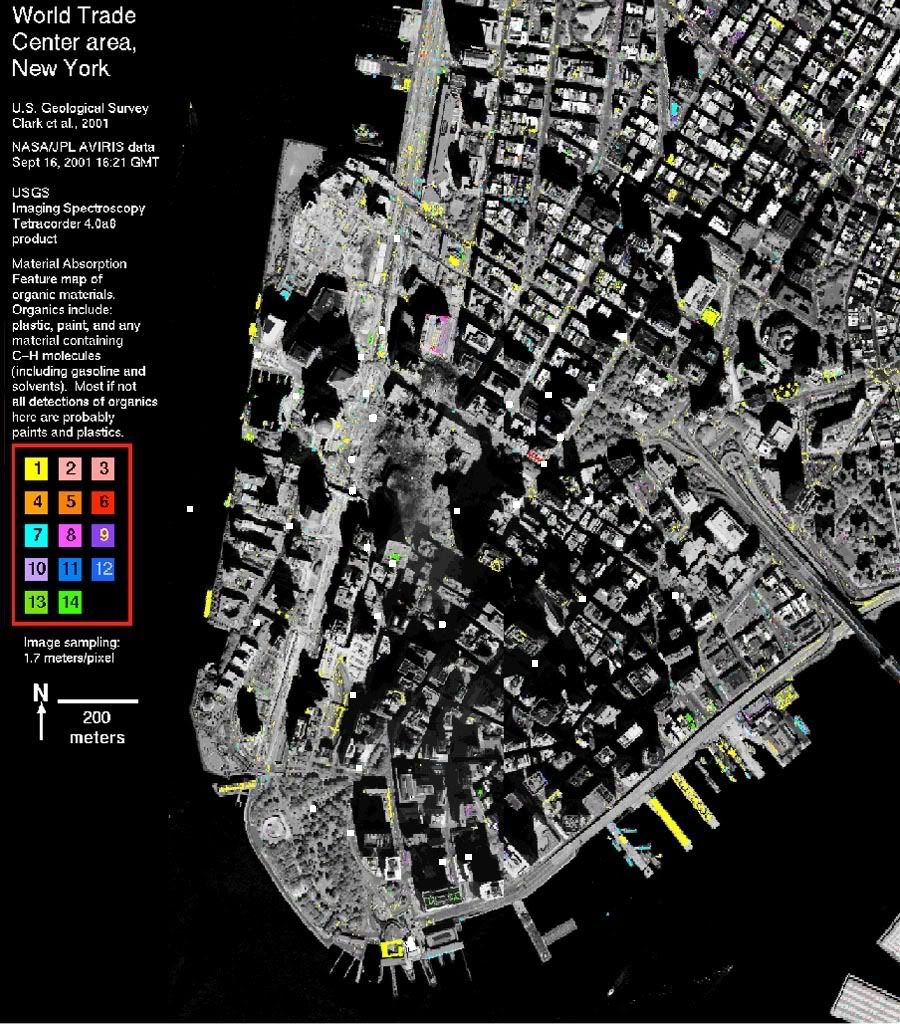|
Map of Sample Locations
(click to enlarge) |
| Source |
|
||||
|
A. USGS - Dust
|
||||||||||
| Source: http://pubs.usgs.gov/of/2001/ofr-01-0429/dustplume.html OFR 01-0429: World Trade Center USGS Dust/Debris Plume Map Maps of dust and debris show asymmetric distribution of materials.The map images on this page (Dust Figures 1a, 1b, 2a, 2b) show locations of materials with spectral shapes similar to the spectra of field samples of dust and debris collected around the lower Manhattan area. These materials/minerals include common building materials; therefore, the maps may include materials in buildings not associated with the World Trade Center (WTC) collapse. While the minerals mapped in any one location may or may not be associated with the WTC event, a pattern is seen that appears to show the distribution of materials related to the WTC collapse. Further, the debris map qualitatively agrees with on scene observations 2 days after the imaging spectroscopy data were acquired. Production of a dust/debris map was challenging because building materials are similar all over the city (e.g. concrete occurs in many locations). However, the pulverized dust/debris does have some general spectral characteristics that can be used. Spectra of the field samples shows a general range of spectral characteristics (Dust Figure 3). Samples WTC01-37B and WTC01-37Am are concrete that display ferrous iron absorptions (most likely due to the aggregate). The spectrum of concrete minus the aggregate is shown in sample WTC01-37A: the cement shows less ferrous absorption. Pervasive in the spectra of the debris is gypsum, and with the variations in abundance of other components, spectra of the dust and debris show the spectral variations seen in Dust Figure 3. We mapped for these general spectral shapes over the spectral range 0.5 to 2.4 microns. The ultraviolet was not included because scattering from smoke affects shorter wavelengths to much. The strategy proved effective. The maps should not be interpreted as indicating that these specific materials were mapped, only that the spectral shape is similar. However, red and yellow colors indicate areas showing more ferrous-like absorptions, and this is apparent in the WTC core zone where many steel girders dominate. Green copper roofs have a similar absorption to ferrous minerals, so they would map as red or yellow. Two versions of the dust/debris map are shown (Dust Figure 1a, 1b, 2a and 2b). Dust Figure 2a, b is the same as Dust Figure 1a, b but without the grey-scale image background. Dust Figure 2a, b allows one to see the mapped materials without the apparent clutter of the grey-scale image. The plume map in Dust Figures 1 and 2 indicate an asymmetry in the dust/debris distribution, with more iron bearing materials to the south by southeast. It is difficult to locate the outer boundary of the dust/debris because of the problem of matching common materials throughout the city. The reference spectra used for matching the dust/debris was:
|
